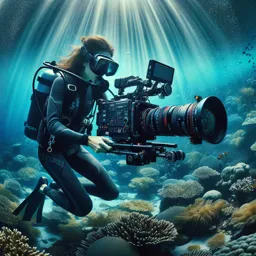Storyboarding is a vital pre-production step that transforms your script into a visual plan. By sketching out shots in advance, filmmakers gain clarity, enhance communication, and save time on set. This article explores the purpose, benefits, and practical techniques of storyboarding to help turn creative vision into cinematic reality.
Introduction
Before a single frame is filmed, directors and production teams rely on a critical tool to map out the journey: the storyboard. This visual guide allows filmmakers to pre-visualize scenes, plan shots, and streamline production. From indie shorts to blockbuster features, storyboarding ensures that the vision is clear and achievable before anyone steps on set.
What is a Storyboard?
A storyboard is a sequence of visual panels that represent each shot or scene in a film. It’s like a comic book version of your script, where each frame depicts a key moment along with camera angles, character actions, and even dialogue cues. This “visual script” helps the creative team plan the flow and pacing of the film with precision.
Why Use Storyboarding?
Storyboarding brings a host of benefits to any film project:
- Visual Planning: Clarifies how scenes will unfold visually, ensuring continuity and flow.
- Team Communication: Acts as a shared reference for directors, cinematographers, designers, and crew.
- Time and Budget Efficiency: Helps avoid reshoots and on-set miscommunication.
- Creative Exploration: Allows experimentation with shot composition and storytelling without financial risk.
How to Create a Storyboard
- Read the Script: Identify key moments that must be visualized to support the narrative.
- Draw the Frames: Use simple sketches—stick figures are okay!—to represent each shot.
- Add Technical Details: Include notes on camera movement, transitions, sound cues, and lighting direction.
- Review with Your Team: Collaborate with crew members to ensure the storyboard answers all key questions before production starts.
Modern Tools for Storyboarding
Digital tools have made storyboarding more accessible than ever. Software like:
- Storyboarder (by Wonder Unit): Free, intuitive, and great for quick sketching.
- FrameForge: Offers 3D pre-visualization with camera and lighting simulation.
- Canva or Photoshop: Useful for creating high-quality, custom visuals.
These tools enable easy updates, collaborative sharing, and animation previews that traditional paper methods can’t provide.
Conclusion
Storyboarding bridges the gap between imagination and execution. It empowers filmmakers to craft a cohesive vision, align their team, and reduce production setbacks. Whether drawn on napkins or created with software, storyboards are a filmmaker’s blueprint—bringing clarity, creativity, and structure to every scene before the cameras roll.





















